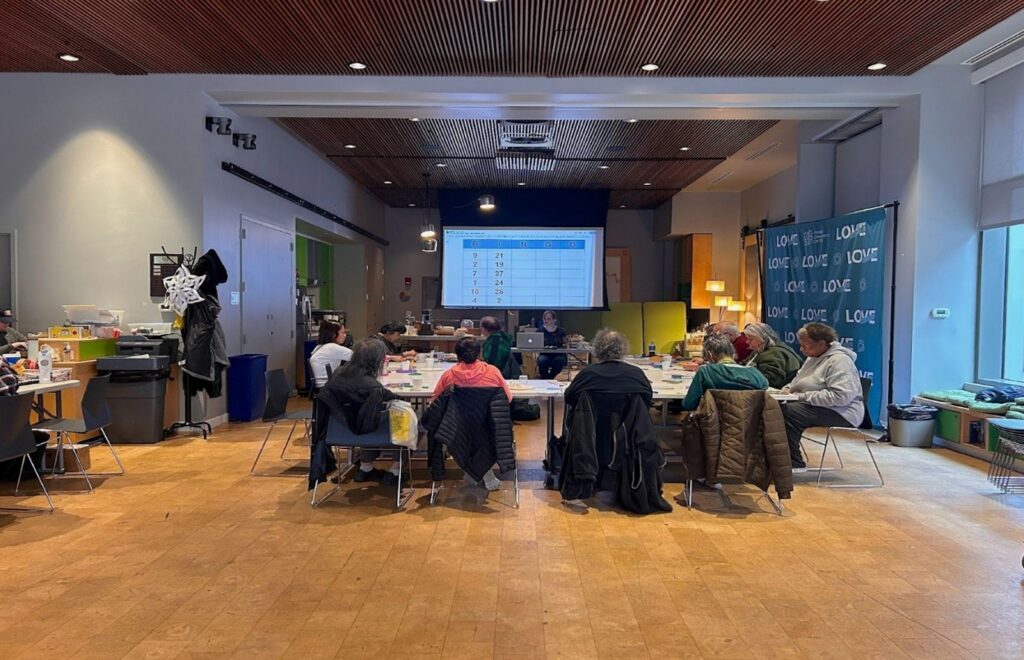Asian Americans represent more than 30 nationalities and ethnic groups, yet typically are categorized as Asian or AAPIs (Asian Americans and Pacific Islanders) for health data, research and reporting. Classifying Asian Americans as a single, monolithic population obscures our immense diversity and has significant implications for the health and wellness of our communities, especially when it comes to the diagnosis and treatment of chronic conditions like Alzheimer’s disease and related dementias (ADRD).
With age as the strongest known risk factor for dementia, it is imperative to examine disparities among ethnic and racial groups to meet their specific needs. The Better Brain Health through Equity report, by the Milken Institute’s Alliance to Improve Dementia Care, discusses health and economic disparities in dementia for African Americans and Latinos who experience disproportionate risk and prevalence of ADRD.
‘Asians in California experienced the most significant rise in Alzheimer’s deaths between 2000 and 2018.’
This data, however, is not available for AAPIs, despite our being among the fastest-growing population of older Americans in the United States. While six origin groups—Chinese, Indian, Filipino, Vietnamese, Korean and Japanese—account for 85% of all Asian Americans, there is significant variability among these six and other subgroups due to distinct cultures, languages, immigration histories and socioeconomic statuses. Better awareness of AAPI subgroup risk and prevalence may elevate the research attention and needs these communities require.
Dementia: Underdiagnosed and Underreported
Dementia is a growing concern for all Americans. Alzheimer’s disease, the most common type of dementia, is the sixth-leading cause of death in the United States. California may be a bellwether for what we will see across the United States in years to come. This is concerning, as Asians in California experienced the most significant rise in Alzheimer’s deaths between 2000 and 2018, increasing by 746%, followed by Hispanics (600%) and Blacks (321%); Whites increased by 214%.
Like other underrepresented communities, some Asian-American subgroups have a higher risk of developing dementia than Whites. According to the Centers for Disease Control and Prevention (CDC), Asian Americans ages 65 or older account for more than 8% of ADRD, despite being less than 6% of the nation’s population. An underestimation of these numbers is likely for several reasons.
- Alzheimer’s disease is often perceived as a mental illness and an embarrassment among Asian subgroups. This cultural stigma may trigger negative responses that deter people from seeking information or a diagnosis. AAPIs may not report symptoms of dementia to a medical professional unless family members require help with behavioral issues.
- Access to culturally and linguistically competent care presents screening, diagnosis and treatment barriers. Cultural biases in cognitive testing include inadequate translation of diagnostic tools to other languages.
- A shortage of bilingual healthcare providers makes testing and diagnosing non-English-speaking older adults challenging. While most Asian Americans speak English proficiently, 28% report that their English is “less than proficient”; this number rises to 43% among foreign-born Asian Americans.
Diversity among Asian Subgroups
Where one is born, lives, and works impacts health outcomes as these factors closely align with income, educational attainment and access to housing and health resources. For example, a recent study revealed how living in a low-income neighborhood doubles the likelihood of dementia—as such, sweeping generalizations that view AAPIs as a homogenous population are problematic. Common perceptions are that Asians are well-educated, earn high incomes, and generally experience good health. In reality, the diverse Asian experience reflects many unmet needs and social determinants of health that impact community risk for dementia:
- Income—While the U.S. median household income of Asians ($94,900) is the highest among all racial and ethnic groups, it camouflages the economic insecurity experienced by AAPI subgroups. Cambodian and Hmong Americans are on the lowest economic ladder rungs, with 40% and 30% poverty rates, respectively. Asian Americans living below the poverty level (12.6%) is very close to the U.S. average (12.4%).
- Education—High educational attainment is a stereotype of Asian Americans. Indeed, 54% of Asians have a bachelor’s degree or more compared to 36% of Whites, 23% of Blacks and 16% of Hispanics. Yet, the high school dropout rate among some Southeast Asian American subgroups is troubling: 40% of Hmong, 38% of Laotian and 35% of Cambodian populations do not complete high school. Only 14% of Native Hawaiians and Pacific Islanders older than age 25 have a bachelor’s degree, compared to 27% of the total population.
- Discrimination—Long-standing health inequities have been brought into sharp focus as the COVID-19 pandemic disproportionately harms racially and ethnically diverse communities. The Alzheimer’s Association reports that 34% of Asian Americans have experienced discrimination when seeking Alzheimer’s care. This rate compares to White Americans at 9%. The pandemic also generated increased reports of anti-AAPI violence and discrimination, negatively impacting health and well-being.
Solutions for Progress
Solutions start with recognition. Asian Americans are at high risk for underdetection of cognitive impairment, in addition to delayed diagnosis and suboptimal management of dementia. Moreover, AAPIs are less knowledgeable about dementia and, combined with stigmatizing attitudes, face significant barriers that impede timely screening, diagnosis and access to care services. To address these factors, we recommend the following.
- Disaggregate the data. Data informs policy interventions, funding decisions and resource allocation. AAPI data disaggregation at the state level, or the collection and reporting of AAPI by subgroup, is an essential first step in identifying and addressing disparities. The Office of Minority Health (OMH), through the Affordable Care Act, created standards for data disaggregation of AAPI data in population surveys. Federal surveys have expanded subgroup data collection to include the six largest origin groups, while “other” is for those outside these six origin countries. Native Hawaiian or Other Pacific Islander tracks as a separate category. At a minimum, states should adopt the OMH standards, and states with higher concentrations of specific subgroups (e.g., Hmongs in Minnesota) should consider including them in data collection.
- Fund more targeted studies and prioritize recruitment. Research to test, sequence, and analyze genetic risk factors for ADRD has been conducted primarily in White populations, with a limited exploration of the role of genetic risks for other racial/ethnic groups. More funding is needed for registries such as the “Collaborative Approach for AAPI Research and Education” (CARE) to improve research participation and proportionate representation in clinical studies and trials.
A whopping 34% of Asian Americans have experienced discrimination when seeking Alzheimer’s care.
- Tailor public health messaging. Culturally and linguistically relevant health communications are needed to educate AAPIs on dementia risk factors and the lifestyle behaviors that support brain health. For example, diabetes is a risk factor for dementia, and Asian Americans are more likely than Whites to have diabetes, despite having lower body weights. Yet, few diabetes prevention and education campaigns focus specifically on Asian Americans or connect metabolic health with brain health, representing an opportunity for innovation to fill gaps.
- Improve early detection of dementia. Resources are needed to identify and provide guidelines for using language-agnostic cognitive screening tools for some AAPIs. Culturally adapted lifestyle modifications incorporating elements from AAPI subgroup cultures can increase their appropriateness and utilization.
- Build a culturally competent workforce. Funding and training are critical to filling workforce shortages and building a culturally skilled workforce. Deliberate recruitment and retention efforts targeting Asian Americans can help build trust. Additionally, requiring health- and long-term care systems to include Asian Americans and other racial/ethnic groups in governance structures and patient or community advisory boards can help give voice to the unique needs of our communities.
A single Asian category masks underlying variations in dementia risk. Opportunities to remediate inequities in healthcare systems, long-term care settings and within specific Asian American communities must start with collecting accurate data, incentivizing research, improving workforce representation, and tailoring interventions and solutions to each community’s unique needs and resources. As the fastest-growing older adult population, we cannot risk a one-size-fits-all approach to brain health.
Diane Ty, MBA, is senior director, Center for the Future of Aging at the Milken Institute, in Washington, DC. Raj Ahuja, MHP, JD, is an associate director at the Milken Center. Jennie Chin Hansen is an advisory member at the Milken Center and served as executive director and CEO of On Lok Senior Health Services, CEO of the American Geriatrics Society, president of AARP, consulted on a San Francisco initiative to develop Geriatric Emergency Departments, and was a stakeholder to California’s Department of Health and Human Services involved in developing its first ever Master Plan for Aging.













